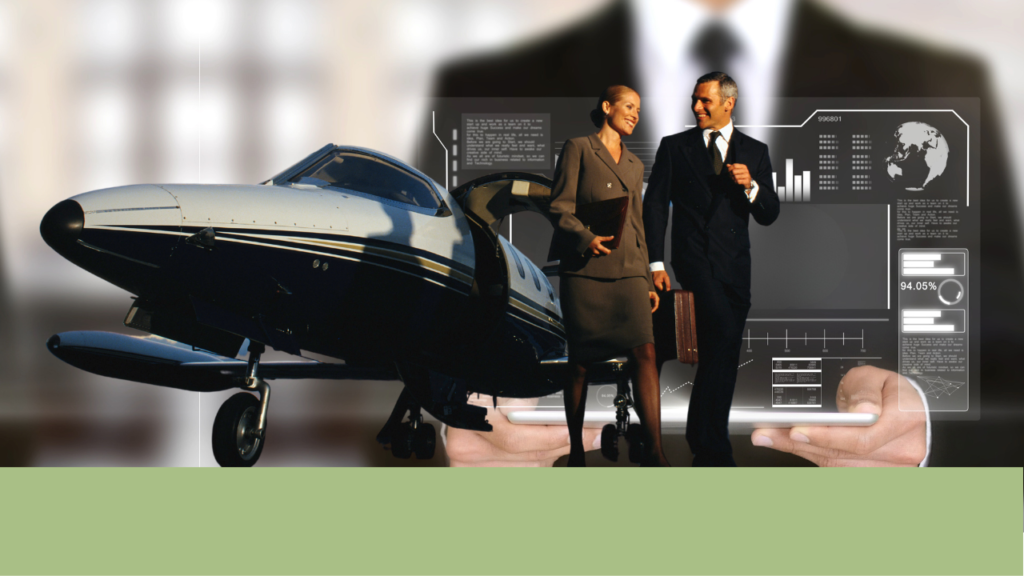From Hangar to Runway: Comprehensive Aircraft Security Measures for Corporate Aircraft

In the world of corporate aviation, security is paramount from the moment an aircraft enters the hangar to its takeoff from the runway. Comprehensive aircraft security measures are essential to protect these valuable assets, their high-profile passengers, and sensitive information. This blog post explores the multi-layered approach to corporate aircraft security, detailing measures that span every aspect of operations, from ground handling to in-flight protection.
The Evolving Landscape of Corporate Aircraft Security:
Recent industry reports indicate a 25% increase in security incidents targeting corporate aircraft over the past three years. This surge underscores the critical need for robust, all-encompassing security measures. As threats evolve, so must our approach to protecting corporate aircraft.
Comprehensive Aircraft Security Measures:
1. Hangar Security:
– Advanced access control systems using biometric authentication
– 24/7 surveillance with AI-enhanced camera systems
– Regular security audits and penetration testing of hangar facilities
Best Practice: Implement a “clean hangar” policy, requiring all tools and equipment to be accounted for and securely stored when not in use.
2. Aircraft Access Control:
– Multi-factor authentication for aircraft entry
– Smart lock systems with tamper-alert technology
– Personalized access protocols for crew and maintenance personnel
Case Study: A leading corporate fleet implemented a new access control system, reducing unauthorized access attempts by 98% in the first year.
3. Pre-Flight Security Checks:
– Comprehensive aircraft sweeps before each flight
– Use of explosive trace detection equipment
– Thorough inspection of all catering and supplies brought onboard
4. Passenger and Luggage Screening:
– Discreet yet thorough passenger screening procedures
– Advanced X-ray and CT scanning for luggage
– Behavioral analysis training for security personnel
5. Ramp and Tarmac Security:
– Secure perimeters around aircraft with physical barriers
– Strict protocols for vehicle access to airside areas
– Real-time monitoring of ground activities using IoT sensors
6. Fuel Security Measures:
– Tamper-evident seals on fuel tanks and systems
– Regular fuel quality checks to detect contamination
– Vetted and monitored fueling processes
Expert Insight: “Fuel security is often overlooked but is critical in aircraft protection,” notes Dr. Emily Chen, aviation security expert. “Contaminated fuel can be as dangerous as any physical threat to the aircraft.”
7. Cybersecurity Protocols:
– Robust firewalls and encryption for all onboard systems
– Regular security updates for avionics software
– Secure, encrypted communication channels for in-flight data transmission
8. In-Flight Security Measures:
– Reinforced cockpit doors with advanced locking mechanisms
– Continuous air-to-ground secure communication
– Training for crew in handling in-flight security threats
9. Emergency Response Planning:
– Comprehensive emergency protocols for various scenarios
– Regular drills and simulations for crew and security personnel
– Coordination with air traffic control and ground-based emergency services
10. Post-Flight Security:
– Thorough aircraft inspections after each flight
– Secure data handling and wiping of sensitive information
– Maintenance oversight to ensure no security breaches during servicing
Innovative Technologies Enhancing Aircraft Security Measures:
1. Drone Detection and Countermeasures:
– Implementation of anti-drone systems around hangars and runways
– Use of AI to distinguish between authorized and threat drones
2. Advanced Materials for Aircraft Security:
– Self-healing composites that can detect and report tampering attempts
– Smart coatings that change color when exposed to chemical agents
3. Quantum Key Distribution for Communication:
– Ultra-secure communication using quantum encryption technology
– Unhackable data transmission between aircraft and ground control
4. AI-Powered Predictive Security:
– Machine learning algorithms to predict potential security threats
– Real-time risk assessment and adaptive security protocols
Regulatory Compliance and Best Practices:
Implementing comprehensive aircraft security measures must align with various regulations and industry standards:
1. TSA Security Guidelines: Adherence to Transportation Security Administration directives for general aviation
2. NBAA Best Practices: Following National Business Aviation Association security recommendations
3. International Standards: Compliance with ICAO Annex 17 for international operations
4. Privacy Regulations: Ensuring all security measures respect passenger privacy rights (e.g., GDPR compliance)
Training and Human Factors in Aircraft Security:
The effectiveness of security measures heavily relies on the human element. Key focus areas include:
1. Regular Security Awareness Training: Keeping all staff updated on the latest threats and procedures
2. Crew Resource Management: Enhancing teamwork and communication in security-related situations
3. Insider Threat Mitigation: Implementing programs to detect and prevent security risks from within the organization
4. Cultural Sensitivity Training: Ensuring security personnel can effectively operate in diverse international environments
Case Study: After implementing a comprehensive security awareness program, a corporate aviation department saw a 40% increase in reported security concerns, leading to enhanced overall safety.
Measuring the Effectiveness of Security Measures:
To ensure the ongoing efficacy of aircraft security measures:
1. Conduct regular security audits and assessments
2. Implement Key Performance Indicators (KPIs) for security effectiveness
3. Gather and analyze data on security incidents and near-misses
4. Stay informed about emerging threats and adapt measures accordingly
Training for Comprehensive Aircraft Security:
Our Corporate Aircraft Security Course offers an in-depth module on comprehensive security measures, covering:
– Latest technologies in aircraft protection
– Risk assessment and mitigation strategies
– Regulatory compliance and best practices
– Hands-on training with advanced security equipment
This training ensures that security professionals are well-equipped to implement and manage robust security measures across all aspects of corporate aircraft operations.
Comprehensive security measures for corporate aircraft are not just a luxury—they’re a necessity in today’s complex threat landscape. From the hangar to the runway and beyond, a multi-layered, technologically advanced approach to security ensures the protection of these valuable assets and their occupants.
Are you ready to elevate your expertise in corporate aircraft security? Enroll in our comprehensive Corporate Aircraft Security Course and master the art of implementing cutting-edge security measures. Visit to learn more and register today. Don’t leave your aircraft’s security to chance – become an expert in comprehensive protection strategies!


